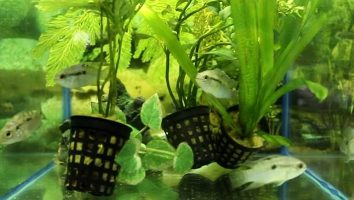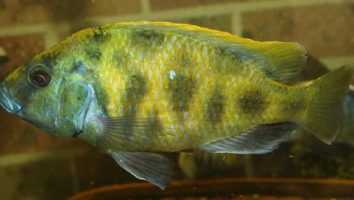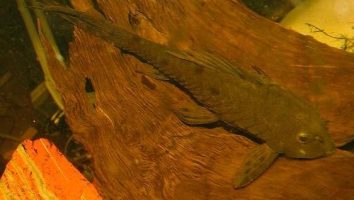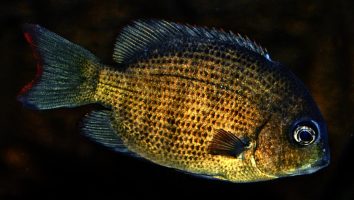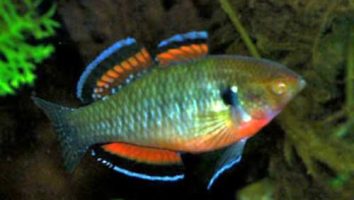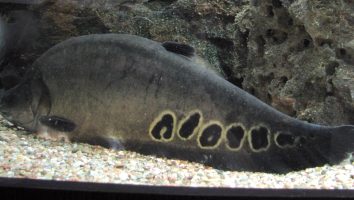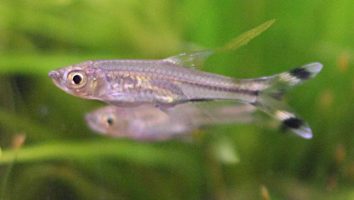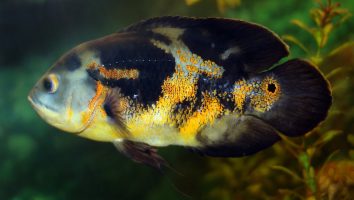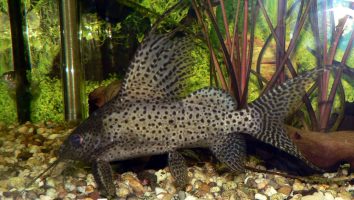The Pygmy Corydoras is a peaceful, hardy, and easy to care for freshwater fish that does well in a community tank.
This little catfish is a great addition to any aquarium, and is perfect for beginner fishkeepers.
But even though they’re easy to care for, there are still a few things you need to know to make sure your Pygmy Corydoras are happy and healthy.
That’s what this guide is for. Below, you’ll learn everything you need to know about Pygmy Corydoras care. Diet, tank mates, size, lifespan, and more.
Table of contents
Species overview
The Pygmy Corydoras (Corydoras pygmaeus) is a species of freshwater fish that is native to South America. These fish are found in the Orinoco Basin in Venezuela and Colombia.
This species of fish prefers to live in slow-moving waters with a lot of vegetation. The Pygmy Corydoras is a bottom-dweller, so they tend to stay near the bottom of the tank where they can find food.
The Pygmy Corydoras is a peaceful fish that is compatible with a wide variety of tank mates. These fish are very popular in the aquarium trade due to their small size and peaceful nature.
Appearance
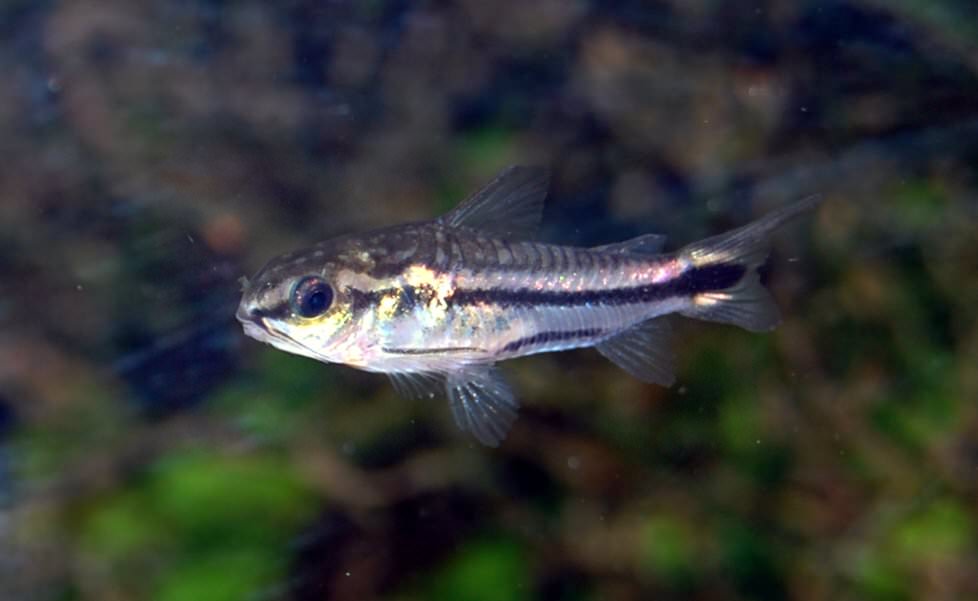
The first thing you’ll notice about this small freshwater fish is their unique coloration. The body of the Pygmy Cory is a dark brown, almost black.
This base color is then highlighted with a bright orange stripe that runs the entire length of the fish. This stripe is widest at the head of the fish and tapers down as it goes towards the tail.
This coloration is very striking and definitely catches the eye.
The body shape of the Pygmy Cory is very similar to other Corydoras species. They have a long, slender body that tapers down towards the tail.
They have a relatively large head in comparison to their body and their eyes are very prominent.
Their fins are all very thin and delicate looking. The dorsal fin is shorter than the anal fin and both of these fins start about two-thirds of the way back on the body.
The pectoral fins are small and located on the sides of the head. Pygmy Corys also have a very small adipose fin located just before their caudal fin.
The caudal fin of this fish is forked and symmetrical.
Lifespan
The average lifespan of a Pygmy Corydoras is 3 to 5 years.
As with any other fish, there are a number of factors that impact their life expectancy.
For starters. if these fish haven’t reproduced then their lifespan will usually be on the higher side of this range. That process can really take a toll on the fish.
The general level of care they receive obviously matters a great deal as well. Even though these are very hardy fish, they’ll obviously live longer in optimal conditions.
Size
Corydoras pygmaeus is one of the smaller species of Corydoras, reaching a maximum size of only around 2.5 cm (1 inch).
Tank
Tank Size
The minimum recommended tank size for Pygmy Corydoras is 10 gallons. However, we recommend going up to a 20 gallon tank if you have the space. This will allow you to keep a larger school of fish and provide them with more swimming room.
Water Parameters
Pygmy corydoras are a tropical fish, so they need warm water to thrive. The water should also be well-oxygenated and have a moderate flow.
Corydoras are very sensitive to water changes, so it’s important to do them slowly and incrementally. Sudden changes in pH, temperature, or hardness can be lethal.
Here are some recommended water parameters for pygmy corydoras:
- Water temperature: 72 to 78 degrees Fahrenheit
- pH levels: 6.5 to 7.5
- Water hardness: 2 to 12 dGH
- Alkalinity Levels: 4-8 dKH
What To Put In Their Tank
As we’ve established, these fish come from South America. This means they’re used to living in warm water with a steady current.
Your first order of business should be to find a quality aquarium heater. We recommend something in the 25-watt range for a 10-gallon tank. This will help ensure the water temperature stays nice and consistent.
Next, you need to find a suitable filter. These fish don’t need a ton of filtration, but a moderate amount of flow is necessary. We recommend a hang-on-back filter for smaller tanks and a canister filter for anything larger.
The substrate in their tank can be pretty much anything. These fish aren’t known to be finicky when it comes to that sort of thing. Just avoid anything too large or sharp that could injure them.
As for plants, Pygmy Corydoras are pretty good about not messing with them too much. You can go with live plants or fake ones, it’s really up to you.
Finally, we recommend including some driftwood or rocks in their habitat. This will give them some places to hide and feel secure.
Common Diseases
The Pygmy Corydoras is a hardy little fish that doesn’t often get sick. However, that doesn’t mean that they’re immune to disease.
There are a few illnesses that these fish are prone to, the most common being ich. This is a parasite that will attach itself to your fish and cause white spots to form on their body.
If left untreated, ich can be fatal. However, it’s relatively easy to treat with the use of a good ich medication.
Other potential diseases include bacterial infections, fungal infections, and parasites. These are all relatively rare but can still affect your fish if the conditions are right.
As with any other fish, the best way to keep your Pygmy Corydoras healthy is to maintain clean and stable water conditions. This will help to prevent any illnesses from taking hold and make your fish less likely to get sick.
Behavior & Temperament
Pygmy Corydoras are social fish that enjoy living in groups. They are very peaceful and tend to get along well with other fish in the tank.
These fish are shy by nature and prefer to stay hidden among the plants and decorations in the tank. They are most active at night when they will come out to feed.
During the day, they will often be seen resting near the bottom of the tank or hiding among the plants.
Pygmy Corydoras are not aggressive and will not bother other fish in the tank. They are also not territorial and will not defend their territory against other fish.
Tank Mates
As with most corydoras, pygmy corydoras are peaceful and can get along with most species.
These fish are also relatively small, which means that they can be kept with a wide variety of tank mates.
The main thing to watch out for is aggression. Avoid tank mates that are known to be nippy or territorial.
Other than that, you have a lot of freedom when it comes to choosing pygmy corydoras tank mates.
Here are some compatible species to consider:
- Guppies
- Platies
- Mollies
- Swordtails
- Neon Tetras
- Harlequin Rasboras
- Ember Tetras
- White Cloud Mountain Minnows
Breeding
These little guys are pretty easy to breed in captivity. The first step is to sex them. Males have a more slender body shape, while females are rounder. Females also tend to be a bit larger.
Once you’ve sexed them, you can put them in a breeding tank. The tank should be at least 10 gallons, but 20 gallons is better. The water should be soft and slightly acidic. You can achieve this by using an aquarium peat filter.
The breeding tank should also have plenty of hiding places. Corydoras are shy fish, so they need plenty of places to hide. Driftwood, plants, and caves all work well.
When everything is set up, add two females for every male. Feed them plenty of live foods, and change about 20 percent of the water each week.
After a while, you should start to see the females getting plumper. That’s a good sign that they’re full of eggs.
When ready, the female will lay her eggs on a smooth surface. It could be a plant leaf, a piece of driftwood, or the glass of the tank. The male will then fertilize them.
Once the eggs are fertilized, the parents will usually eat them. So, it’s best to remove the adults at this point.
The eggs will hatch in about a week. Once they hatch, you can feed the fry baby brine shrimp or other live foods.
Conclusion
Overall, we think the Pygmy Corydoras is an excellent choice for beginning fishkeepers and experienced aquarists alike.
They’re small and unobtrusive but still add a lot of life and personality to your tank.
They’re also very easy to care for, which is always a bonus.
If you’re looking for a new fish to add to your tank, we highly recommend giving the Pygmy Corydoras a try!

